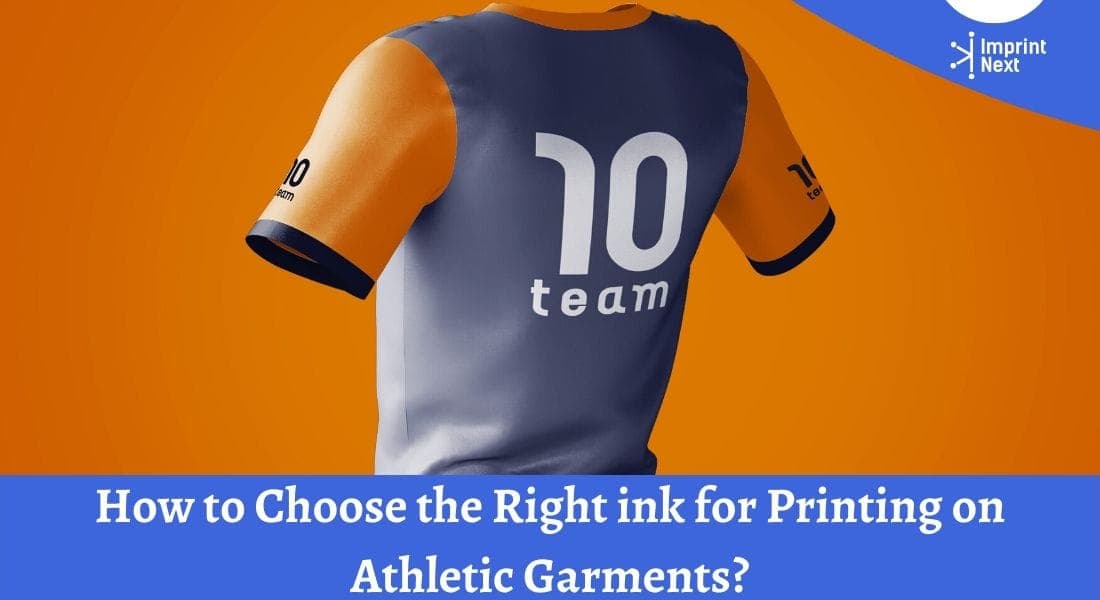
Last Updated on: 28th February 2022, 9:34 pm
Not surprisingly, for numbering on athletic garments you can apply various methods to everyday garment printing to improve results. Mesh selection and tightness are important, as is starting with a dense film positive which will be addressed shortly. Emulsion thickness also is important
To create good numbers, use a thicker emulsion over mesh (EOM). This is achieved when the amount of emulsion is much thicker than that of the mesh. This requires a dense film to ensure proper emulsion exposure.
How to Choose the Right ink for Printing on Athletic Garments?
It may be overwhelming to pick the correct ink for athletic numbering. Would you use polyester or nylon, or maybe even the general form of ink? Can a dye blocking or catalyst be used? There's a lot of trouble. A set of choices, Now let us discuss each of them:-
1. Polyester:
The correct ink choice for numbering will be determined mainly by the fabric type or garment being printed. If it’s a red or dark-colored, 100% polyester fabric, then you should use a low-bleed polyester white ink as an under the base.
If the garment is made of polyester fabric that has been dyed red or any other dark color or pattern via sublimation, then consider using a dye-blocking under the base that is grey or black, and then can be over-printed using a
polyester white ink.
Whether a garment was sublimated often can be determined by looking at its inside. If it’s white and the outside is a different color, then it has been dyed via sublimation. Always make an effort to ascertain the fabric type you are printing — it’s better to be safe than sorry.
2. Nylon:
To print on nylon garments, you need not bother about dye migration or bleeding. Use inks that specifically are formulated for nylon, as their properties make them more durable. However, consider whether to use a catalyst to promote better ink adhesion to the slippery fabric.
For example, if the nylon or another synthetic fabric is smooth and shiny, the ink may have difficulty sticking to the garment — hence the need for a catalyst. But if the fabric has some openness to it or “fur” then the ink should adhere without the catalyst.
Some fabrics also may have a chemical treatment or coating that can make it difficult for the ink to adhere. The added chemical could have properties that make the fabric water-repellent, such
as a raincoat or umbrella.
Printing on these pretreated fabrics can be challenging. It may even be worth it to attempt to remove the coating or treatment in the area in which you want to print.
Removal can be done by dabbing some Isopropyl alcohol on the area to remove or dilute the coating to help the ink adhere.
3. Athletic fabrics:
What about stretch? Many new fabrics types, especially athletic styles that often are numbered, contain multiple yarn varieties, including combinations of rayon, polyester, nylon, cotton and Lycra.
Use ink with built-in, enhanced stretch or use a stretch additive to give the ink film more elongation.
4. Performance fabrics:
Many new fabric types, especially those containing synthetics, appear “normal” but can be more sensitive to heat. Fortunately, many ink manufacturers now offer a variety of low-cure inks that typically cure at 275°F.
If you want to turn an ink you already have on the shelf into a low-cure type, simply mix in a low-cure additive that will reduce the cure or fuse temperature into the 275°F range.
However, using low-cure inks alone doesn’t completely preclude the problems that can be caused by printing these heat-sensitive fabrics.
Heat is a necessary evil in our industry. It’s needed to cure or fuse the ink, but it can become an enemy after the ink has reached the required cure temperature.
For example, if the fabric is a dark sublimated polyester, then the dye may bleed if it gets too hot. So keeping the garment as cool as possible after the ink has reached the cure temperature is a must.
Avoid stacking hot garments; use a cooling fan at the end of the dryer or shake hot garments to cool them before stacking them in two or more piles.
A flash unit also is a heat source, so remember to only flash the ink to a “dry-to-the-touch” state and nothing more.
Over-flashing can cause inter-coat-adhesion problems, which occur when a color is printed on top of another that has been overfished. The top color doesn’t bond with the over-flashed ink, causing them to peel apart.
5. Garment usage:
To make it a bit more complicated when discussing the right ink choices when printing athletic numbers, also consider how the garment will be used.
Printing a volleyball jersey that won’t undergo a lot of contacts, Meaning the printed ink film won’t be susceptible to much abuse, is different than numbering a high school football jersey.
With the latter, a lot of contacts (rubbing, scratching, etc.) can be expected, so the ink needs to be more durable.
In such situations, choose an ink that produces a tough surface such as one formulated for nylon, not one containing blowing agents, i.e., puff or suede, as those ink types are not as
resistant to scuffs and scratches.
A high-quality ink may cost a little more because of the quality of the ingredients but will be
worth it in the long run.
6. Simple Printing Tips:
- Many athletic garments are misprinted due to insufficient off-contact. The screen should peel away from the garment as soon as the squeegee has deposited the ink. Also, keep your screen mesh as tight as possible and group screens.
- When printing numbers, use screens with the same type of tension to avoid blurring.
- When decorating athletic uniforms, multiple images usually are involved, including a team logo, the player’s name, and the number. Not only have you invested in the garment itself, but printing one or more impressions means you have wasted time and labor.
- It’s important to ensure everything is in order to achieve a correct print.
- Also, remember to use the correct pallet adhesive. A water-based adhesive will leave little to no residue inside the garment.
- Spray adhesives, on the other hand, can leave residue inside the garment when the pallets get hot during the printing process.
- Having an opaque film means your exposures are easier and more forgiving. The thick emulsion will help not only in the ink film’s opacity but also by separating the screen mesh from the garment, resulting in a smoother image. Lower mesh counts are used to get good coverage when printing athletic images, but there also is more potential for the image edges to appear rough.
- Thicker emulsion reduces the rough edges and the denser, more opaque film allows better emulsion exposure. A film positive that is more transparent likely will under-expose the screen to get the image to develop.
- The same basic principles that apply to general screen printing also apply to athletic numbering.
- To support the increase in synthetic fabrics being used for athletic and performance garments, lower-curing, bleed-blocking, and stretchy inks have been developed to achieve great prints on these new options.















